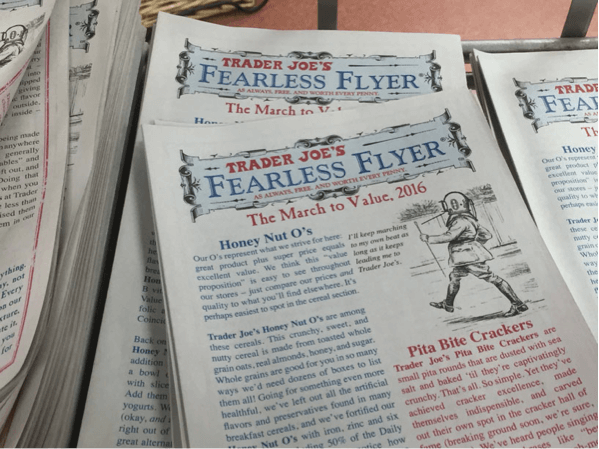By Tom Trush
Imagine driving into a neighborhood of newly built homes…
All the paint still looks wet. The roads are smooth and spotless. The lawns are manicured like a golf course.
Right at the entrance, though, a seemingly vacant house sits weathered by time. It’s likely been there for decades.
Which house would you notice?
Now, imagine driving through a rundown neighborhood with that same weathered house. Would you still notice it?
What I’m describing here is a concept called contrast.
…A state of being strikingly different from something else.
During the most recent Olympics, this photo was everywhere:

It was shared by media outlets worldwide. In fact, the image was retweeted 22,000+ times from just Simone Biles’s Twitter account.
The contrast between the two individuals is what creates interest and grabs your attention.
People are naturally drawn to contrast.
Fortunately, we can use this fact to our advantage when marketing. One way is to simply make sure your marketing doesn’t look like, well, marketing.
Ever see Trader Joe’s Fearless Flyer?
While typical grocery store mailings are all pictures and sale prices, the Fearless Flyer doesn’t show a single product.

Instead, the monthly mailing is filled with stories, interesting facts, and old-fashioned cartoons – all based around the month’s featured products.
Fearless Flyer reads like a magazine.
Unfortunately, the online version doesn’t have the same impact, although you can still get an idea of the story-like product descriptions here.
Keep in mind: as humans, we instinctively compare – so you can often put yourself at an advantage by presenting an alternative to amplify what you offer.
The key is to present two contrasting items or scenarios one after the other.
…And explain the unappealing alternative first.
Of course, we see this all the time with discount pricing. A marked-down price seems more appealing when you have the original price to compare it to.
Look at this website excerpt from Basecamp, a project management tool:
Using multiple products, chatting constantly, or sending a bunch of emails around makes things more complicated. What’s official? How do I see it all? Where’s the right place to share something? It’s a hot mess.
Come over to the Basecamp way and you’ll have everything you need neatly organized in one place. It’s a calmer, more peaceful way to work.
The first paragraph explains the unappealing alternative. The second presents the more attractive scenario.
When Google launched its Pixel and Pixel XL phones, they knew their largest competition would be Apple’s iPhone.
Knowing people would naturally compare the two, Google promoted its new product by attacking the iPhone’s flaws. For example, a promo video aired during the launch event included the following statement:
“3.5mm headphone jack satisfyingly not new.”
(Apple eliminated the headphone jack from the iPhone 7 to many people’s dismay – and it still hasn’t returned.)
During the event, Pixel phones were also promoted as having “no unsightly camera bump.” This was obviously another dig at the iPhone, which has been criticized for having a protruding camera lens.
Although the iPhone was never mentioned, Google successfully created contrast because people naturally saw the Apple product as the alternative option.
And here’s a final thought to consider:
Social psychologists have long studied how people perceive their options when presented with two offerings. Generally, when information is shared about a first option before mentioning a second, the latter is seen as more favorable.
This is because we anchor decisions based on the first information we receive.
The mind needs a benchmark.
So, rather than only focusing on your product or service, try describing a competitor’s option. You don’t need to describe much – just enough to remind prospects of the alternative.
